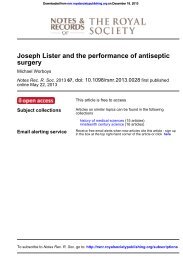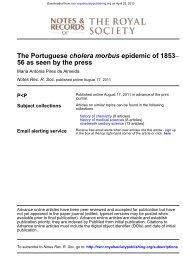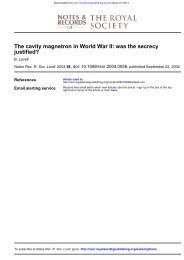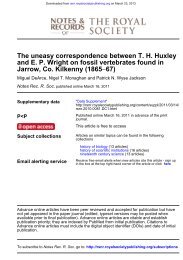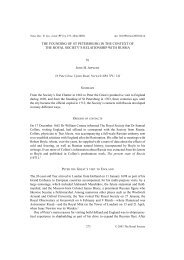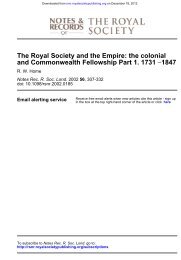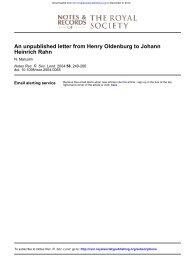Royal Society Miscellaneous Manuscript 6/5: Alchemical notes in ...
Royal Society Miscellaneous Manuscript 6/5: Alchemical notes in ...
Royal Society Miscellaneous Manuscript 6/5: Alchemical notes in ...
Create successful ePaper yourself
Turn your PDF publications into a flip-book with our unique Google optimized e-Paper software.
Dubious read<strong>in</strong>gs are given <strong>in</strong> curly brackets with an italicised question mark:<br />
{<strong>in</strong>præparatus?}.<br />
Catchwords are presented thus: {catchword: nostra}.<br />
Folio numbers are given <strong>in</strong> curly brackets <strong>in</strong> bold: {1r}. There are no folio or page<br />
numbers <strong>in</strong> the manuscript itself.<br />
Interl<strong>in</strong>ear and marg<strong>in</strong>al <strong>in</strong>sertions are placed <strong>in</strong> angle brackets < >.<br />
Deleted text is presented <strong>in</strong> strikethrough.<br />
Normally, one l<strong>in</strong>e is left blank between paragraphs. Where Newton has left an<br />
unusually large gap between paragraphs, two l<strong>in</strong>es are left blank.<br />
Indentation of paragraphs (or the lack of it) is given as it appears <strong>in</strong> the manuscript.<br />
Any other editorial commentary is given <strong>in</strong> the end<strong>notes</strong>.<br />
Newton uses the follow<strong>in</strong>g more or less conventional symbols <strong>in</strong> the text:<br />
☼ Sol/sun, i.e. gold<br />
� Luna/moon, i.e. silver<br />
� Mercurius/mercury (either the planet or the metal)<br />
♀ Venus, i.e. copper<br />
♂ Mars, i.e. iron<br />
� Jove/Jupiter, i.e. t<strong>in</strong><br />
� Saturn, i.e. lead<br />
� sulphur<br />
� antimony/antimonium



